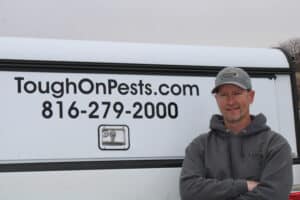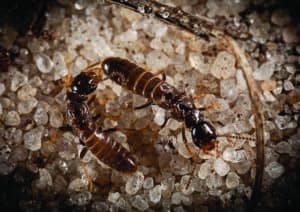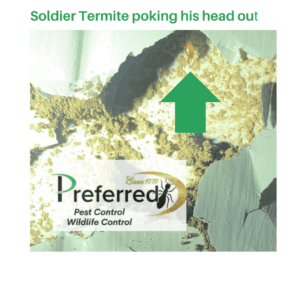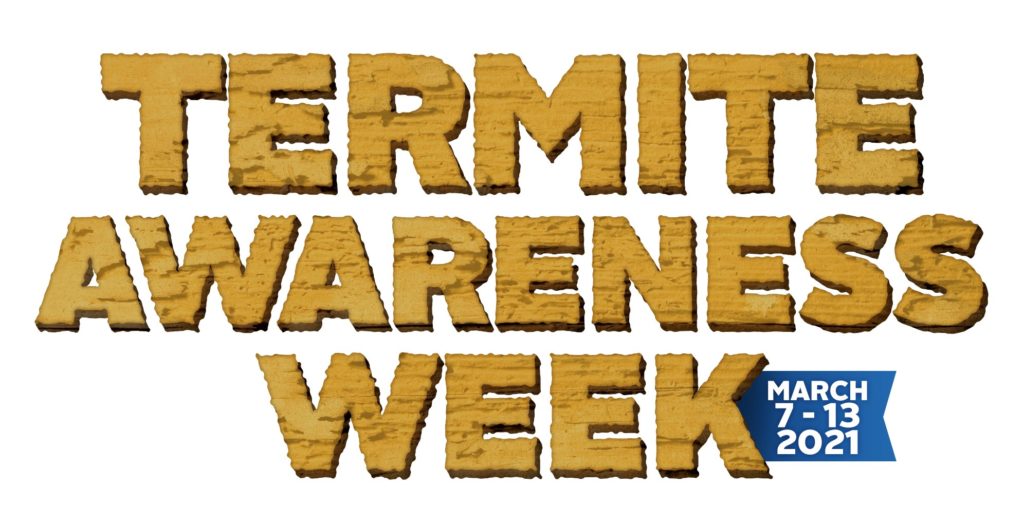Can Termite Damage Be Repaired? Understanding Subterranean Termite Impact
Termites are a homeowner’s worst nightmare, not only because of their ability to remain undetected for long periods but also due to the significant damage they can cause to the structural integrity of a home. Among the various termite species, subterranean termites are particularly notorious for their destructive power. These termites live in underground colonies and can infiltrate your home through wood that touches the ground or via mud tubes they construct to reach food sources above ground. Once inside, they can cause extensive damage, leading many homeowners to wonder: Can termite damage be repaired?
Understanding Subterranean Termite Damage
Subterranean termites primarily feed on cellulose, a component found in wood. Over time, their relentless feeding can compromise the strength and safety of the wooden structures within your home, including support beams, flooring, and walls. Recognizing the signs of subterranean termite damage early is crucial for mitigating their impact. These signs include hollow-sounding wood, visible mud tubes on exterior walls, and sagging floors or ceilings.
Assessing the Damage
The first step in addressing termite damage is to conduct a thorough assessment. This task is best left to professionals who can accurately determine the extent of the infestation and the damage. A comprehensive inspection will involve checking all potential termite entry points and damage hotspots, ensuring that the full scope of the issue is understood before repair work begins.
Repairing Termite Damage
The good news is that termite damage can be repaired, but the approach depends on the extent of the damage. For minor damage, repairs may involve removing and replacing the affected wood. This process can be relatively straightforward for non-structural elements like trim or baseboards. However, for structural damage, the repair process is more complex and typically requires the expertise of a structural engineer or a specialized repair contractor. They may reinforce damaged wood with new wood or metal supports, or in severe cases, completely replace compromised structural elements to ensure the home’s safety and stability.
Preventing Future Infestations
Repairing the damage caused by subterranean termites is only part of the solution. To protect your home from future infestations, it’s essential to take preventive measures. These can include maintaining an 18-inch clearance between soil and any wood parts of your home and ensuring proper drainage away from the foundation. Regular inspections by pest control professionals are also crucial to catch any new infestations early.
Conclusion
While subterranean termite damage can be a daunting issue, it is repairable with the right approach and professionals. Early detection and prompt action are key to minimizing damage and repair costs. By understanding the nature of subterranean termites and taking proactive steps to protect your home, you can maintain its structural integrity and value for years to come. Remember, the best defense against termites is a combination of vigilance, regular inspections, and preventive measures to ensure these unwelcome guests don’t return.
In the battle against subterranean termites, knowledge and prompt action are your best allies. If you suspect termite activity in your home, don’t hesitate to contact a pest control professional to assess the situation and recommend a course of action. With the right care and attention, your home can be restored and protected against future termite threats.
What Termite Treatment Methods Are Most Effective for Subterranean Termites?
 Subterranean termites are a formidable enemy for any homeowner, given their ability to destroy the structure of a house from the inside out, often undetected until significant damage has occurred. Fortunately, advancements in pest control technology have provided us with several effective methods to combat these destructive pests. When it comes to treating subterranean termites, understanding the available treatments and their effectiveness is crucial for homeowners looking to protect their investment.
Subterranean termites are a formidable enemy for any homeowner, given their ability to destroy the structure of a house from the inside out, often undetected until significant damage has occurred. Fortunately, advancements in pest control technology have provided us with several effective methods to combat these destructive pests. When it comes to treating subterranean termites, understanding the available treatments and their effectiveness is crucial for homeowners looking to protect their investment.
Liquid Soil Treatments
Liquid soil treatments are a traditional and widely used method for combating subterranean termite infestations. This treatment involves applying a liquid termiticide to the soil around and beneath a structure. The termiticide creates a barrier that kills termites as they attempt to pass through it, providing long-term protection against future infestations. Modern termiticides are designed to be less toxic to humans and pets while remaining highly effective against termites. When properly applied by a professional, liquid soil treatments can protect a home from subterranean termites for up to five years or more.
Baiting Systems
Termite baiting systems represent a more modern approach to termite control. These systems involve placing bait stations around the perimeter of a home. The bait contains a slow-acting toxin that termites carry back to their colony, effectively eliminating the colony over time. Baiting systems are particularly appealing because they are less invasive than liquid treatments and offer a way to monitor termite activity. They require ongoing maintenance to check and refill bait stations as needed, making them a sustainable long-term solution.
Borate Treatments
Borate treatments involve applying a borate solution directly to wood surfaces in your home. This solution soaks into the wood, providing lasting protection against termites and other wood-destroying insects. Borate treatments are ideal for new construction or during major renovations when wood surfaces are exposed. While effective, this method is preventive and works best in conjunction with other termite treatment strategies.
Fumigation
While less commonly used for subterranean termites, fumigation is a method reserved for severe infestations that cannot be controlled with other treatments. This process involves covering the home with a tent and releasing a gas that penetrates all areas of the structure, killing termites inside. Fumigation is highly effective but also more disruptive, requiring homeowners to vacate the property for several days.
Integrated Pest Management (IPM)
Integrated Pest Management (IPM) is a comprehensive approach that combines multiple strategies to manage termite infestations. IPM focuses on prevention, using physical barriers, such as sand or steel mesh, to deter termites, in conjunction with chemical treatments and regular inspections. This holistic approach is tailored to the specific needs of your property, making it a highly effective way to prevent and control subterranean termite infestations.
Conclusion
When it comes to subterranean termites, there is no one-size-fits-all solution. The most effective termite treatment method depends on the extent of the infestation, the construction of the home, and the surrounding environment. A professional pest control expert can assess your situation and recommend the best treatment plan for your home. Regular inspections and proactive measures are key to protecting your home from the threat of subterranean termites.
How Often Should You Get a Subterranean Termite Inspection?
Subterranean termites are a homeowner’s worst nightmare, causing billions of dollars in damage each year in the United States alone. Unlike other pests, subterranean termites can go unnoticed for years, silently eating away at the structure of your home. This is why regular termite inspections are critical. But the question remains: How often should you get a termite inspection?
The Importance of Regular Termite Inspections
Subterranean termites live underground and build mud tubes to access food sources above ground, making them difficult to detect without a professional inspection. These termites are particularly voracious, capable of causing significant structural damage in a relatively short amount of time. Regular inspections are essential not only for detecting the presence of termites but also for preventing potential infestations.
Recommended Inspection Frequency
For most homes, an annual termite inspection is recommended. This frequency ensures that any new termite activity can be identified and addressed before significant damage occurs. However, several factors can influence how often you should have your home inspected:
Geographical Location: In areas with high termite activity, more frequent inspections may be necessary. Subterranean termites are especially active in warmer climates where the ground doesn’t freeze.
History of Termite Activity: Homes that have previously had termite problems should consider more frequent inspections to prevent reinfestation.
Construction Type: Certain types of construction, such as homes with crawl spaces or wood in contact with the ground, are more susceptible to termite infestations and may benefit from more frequent inspections.
What Happens During an Inspection?
A professional termite inspector will examine both the interior and exterior of your home, looking for signs of termite activity or conditions that could lead to an infestation. This includes inspecting the foundation, crawl spaces, and any wood structures around the property. If termites are found, the inspector can recommend treatment options to eliminate the colony and protect your home from future infestations.
Preventing Subterranean Termite Infestations
In addition to regular inspections, homeowners can take proactive steps to make their property less attractive to termites:
Eliminate Moisture: Subterranean termites are attracted to moisture. Fix leaks, ensure proper drainage, and use dehumidifiers in damp areas of your home.
Remove Food Sources: Keep firewood, mulch, and other cellulose-based materials away from your home’s foundation.
Seal Entry Points: Fill cracks in your home’s foundation to prevent termites from entering.
The Bottom Line
Subterranean termites pose a serious threat to the structural integrity of your home. An annual termite inspection is a small investment that can save you from the costly repairs associated with termite damage. If you live in a high-risk area or have had termites before, consider scheduling inspections more frequently. Remember, the key to protecting your home is early detection and prevention.
Don’t wait for visible signs of damage to appear. Schedule your termite inspection today and ensure your home remains safe and sound for years to come.

Identifying Subterranean Termite Infestations: Essential Signs Homeowners Must Know
Subterranean termites are among the most damaging pests to homes, capable of causing extensive structural damage before they are even detected. Understanding the signs of a subterranean termite infestation is crucial for homeowners to prevent significant damage and financial loss. This blog post outlines the key indicators of subterranean termite activity in your home, providing essential knowledge for early detection and intervention.
Key Signs of Subterranean Termite Infestations
Mud Tubes: These are one of the most definitive signs of subterranean termites. These pencil-sized tubes are constructed from soil and termite saliva and serve as protective tunnels for termites to travel between their underground colonies and food sources above ground. Check your home’s foundation, crawl spaces, and walls for these telltale tubes.
Swarmers: The appearance of termite swarmers, or reproductive termites, inside your home often signifies an existing infestation. These winged termites emerge to mate and start new colonies. While seeing them outside is not always a cause for alarm, finding swarmers indoors is a strong indication of an infestation.
Discarded Wings: After swarmers mate, they shed their wings. Finding piles of discarded wings near windowsills, doors, or other entry points can indicate that termites are entering your home to establish a new colony.
Wood Damage: Subterranean termites consume wood from the inside out, leaving behind a honeycomb pattern in the wood. This damage may not be visible on the surface. Tapping on wood that sounds hollow or feels soft when prodded with a screwdriver can reveal hidden termite activity.
Frass: Unlike other types of termites, subterranean termites do not leave visible droppings known as frass. However, the presence of mud-like droppings or soil within wood or along walls can indicate their activity, as they use soil to construct their mud tubes and nests.
Tight Fitting Doors and Windows: The moisture from termite nests can cause wood to warp, making doors and windows difficult to open or close. This warping can sometimes be mistaken for water damage.
Preventative Measures
Reduce moisture around your home: Subterranean termites are attracted to moisture. Ensure proper drainage away from your home’s foundation and fix any leaking pipes or faucets.
Regular Inspections: Consider annual inspections by a professional pest control service to identify and treat potential termite activity before it becomes a full-blown infestation.
Remove Food Sources: Keep firewood, mulch, and paper away from the foundation of your home. These materials can attract termites and provide them with a food source.
Taking Action
If you notice any of the signs mentioned above, it is critical to act swiftly. Contact a professional pest control service specializing in termite eradication. They can assess the extent of the infestation and recommend an appropriate treatment plan, which may include soil treatments, bait systems, or direct wood treatments to eliminate the colony and protect your home from future infestations.
Conclusion
Subterranean termites pose a serious threat to your home’s structural integrity. By familiarizing yourself with the signs of an infestation, you can take early action to mitigate damage. Regular inspections and preventative measures play a vital role in keeping your home termite-free. Remember, the key to controlling subterranean termite infestations is early detection and professional intervention.
By understanding and acting upon these signs, homeowners can protect their properties from the silent but significant threat posed by subterranean termites. Stay vigilant and proactive in your termite prevention efforts to ensure your home remains safe and secure.

In case you missed it….
In case you missed it… we at Preferred Pest Control celebrated Termite Awareness Week last month! Perry and Matt sat down to have a discussion on all things termites. You can catch the replay along with other valuable information on termites on our FaceBook page as well as on our YouTube Channel.


